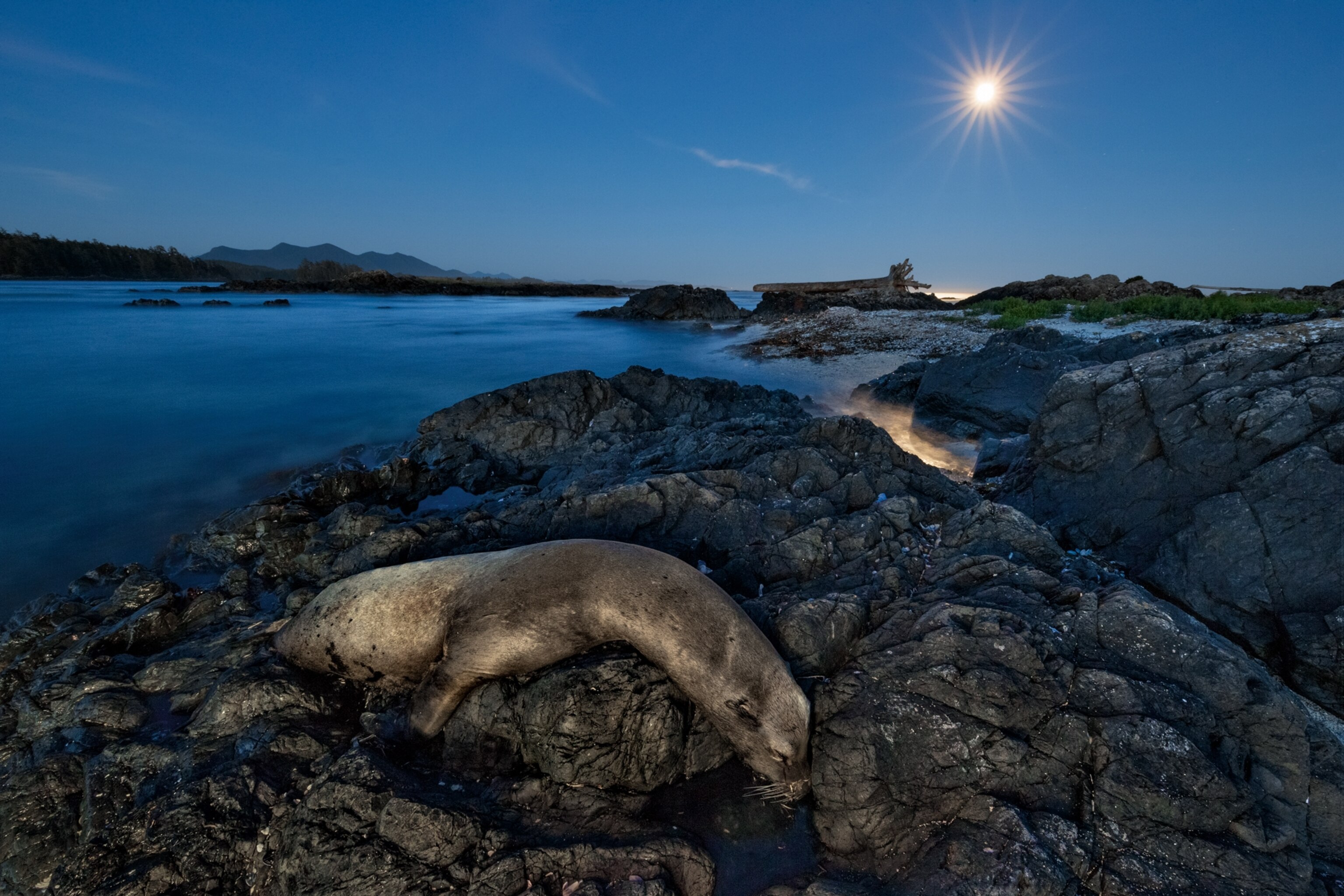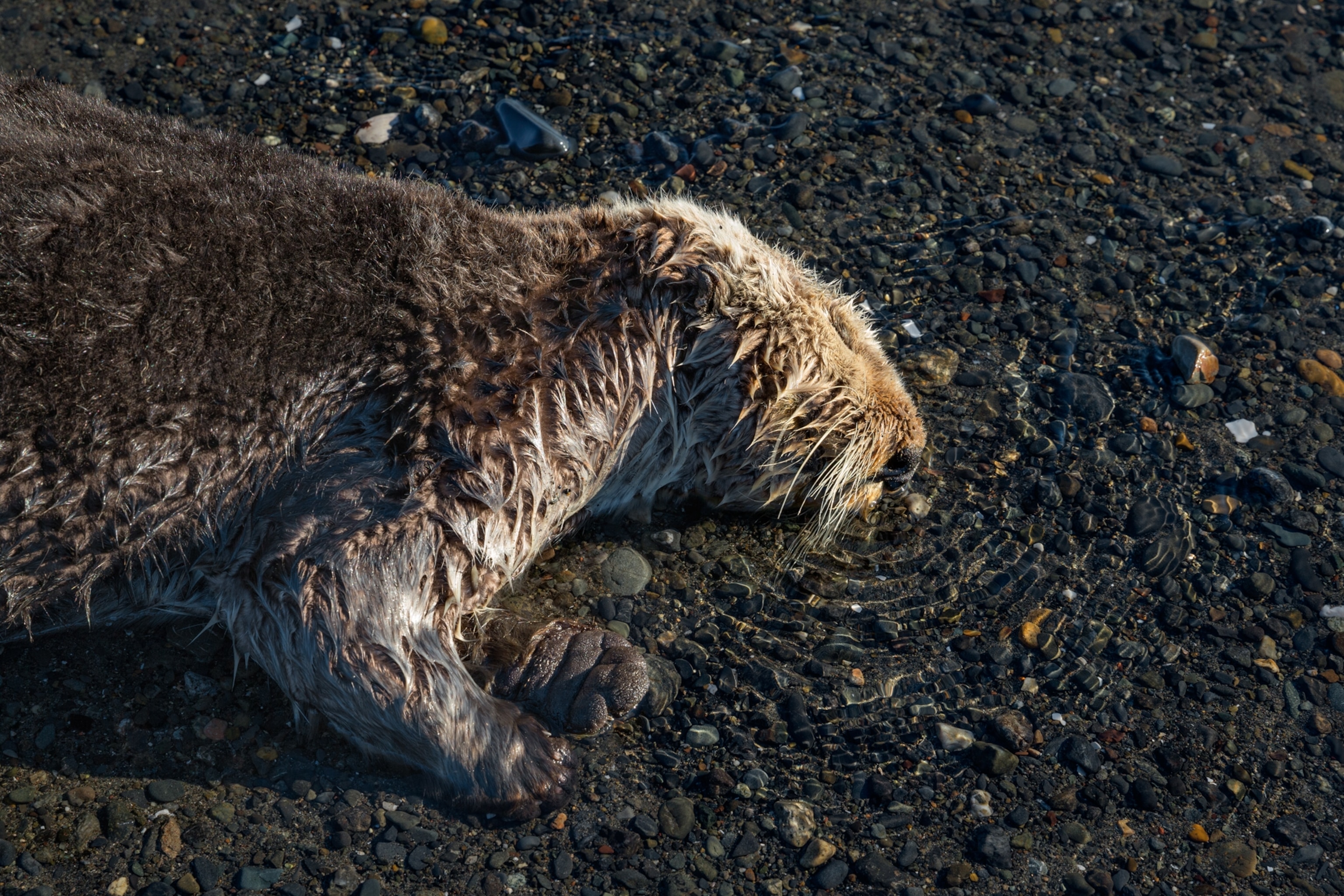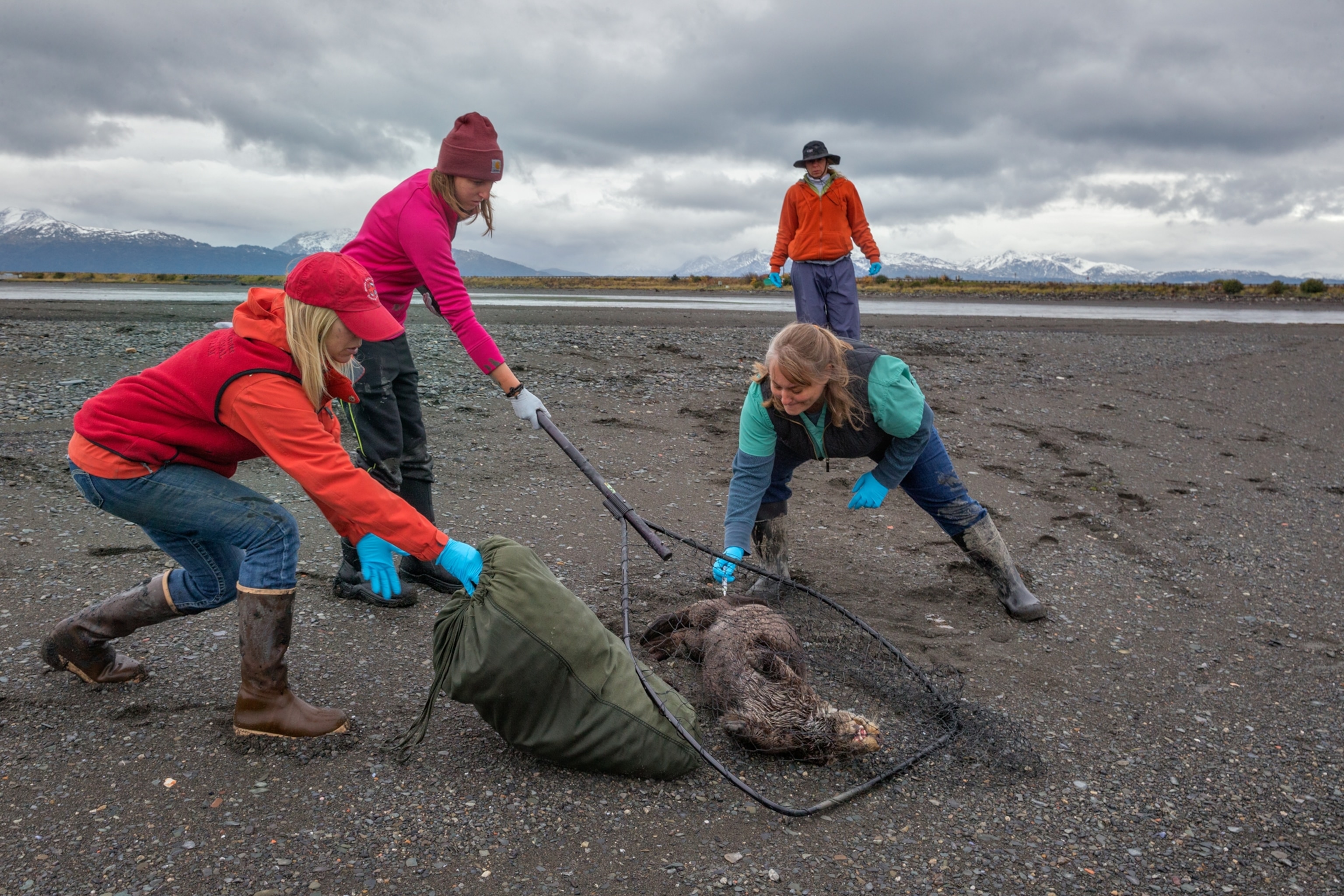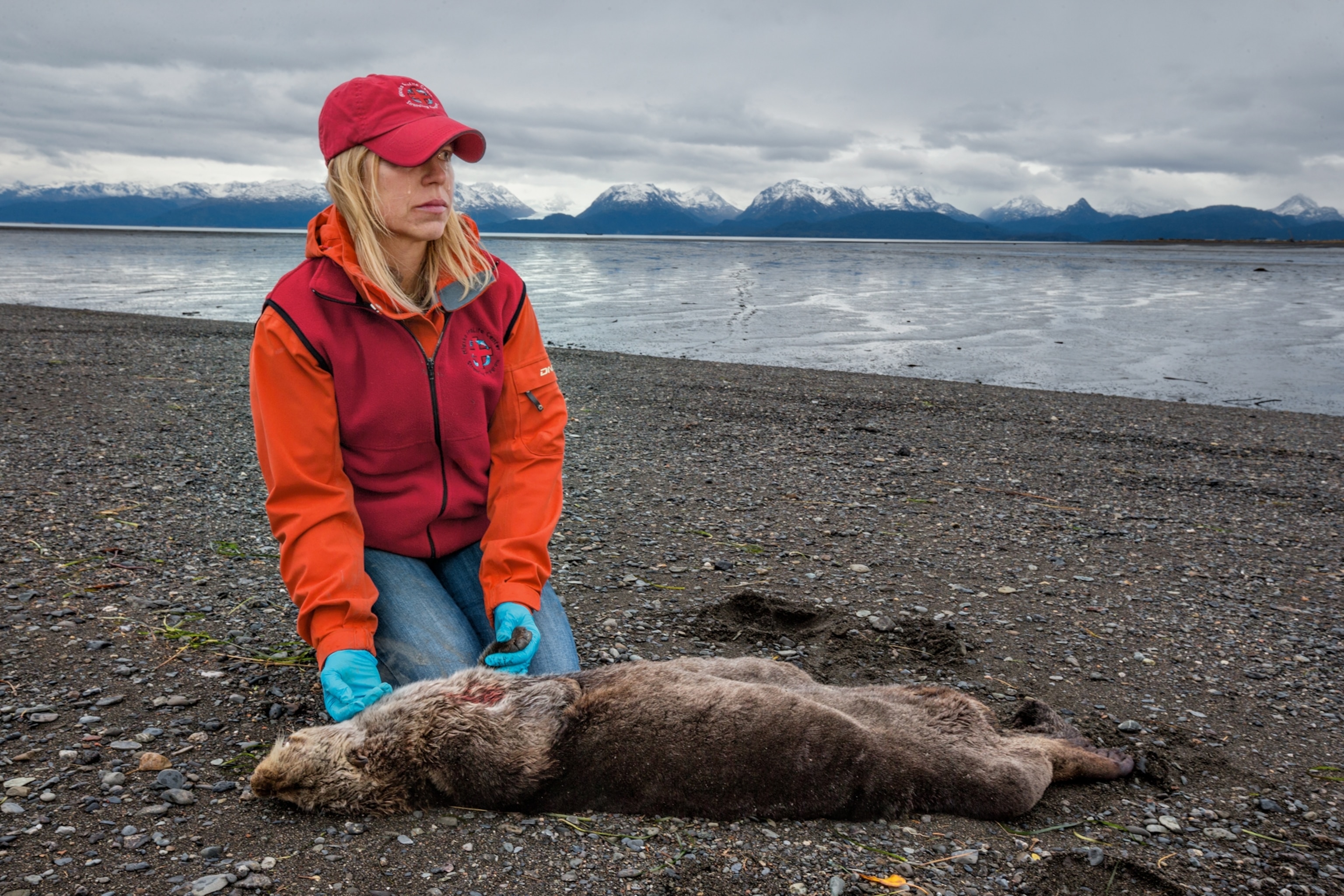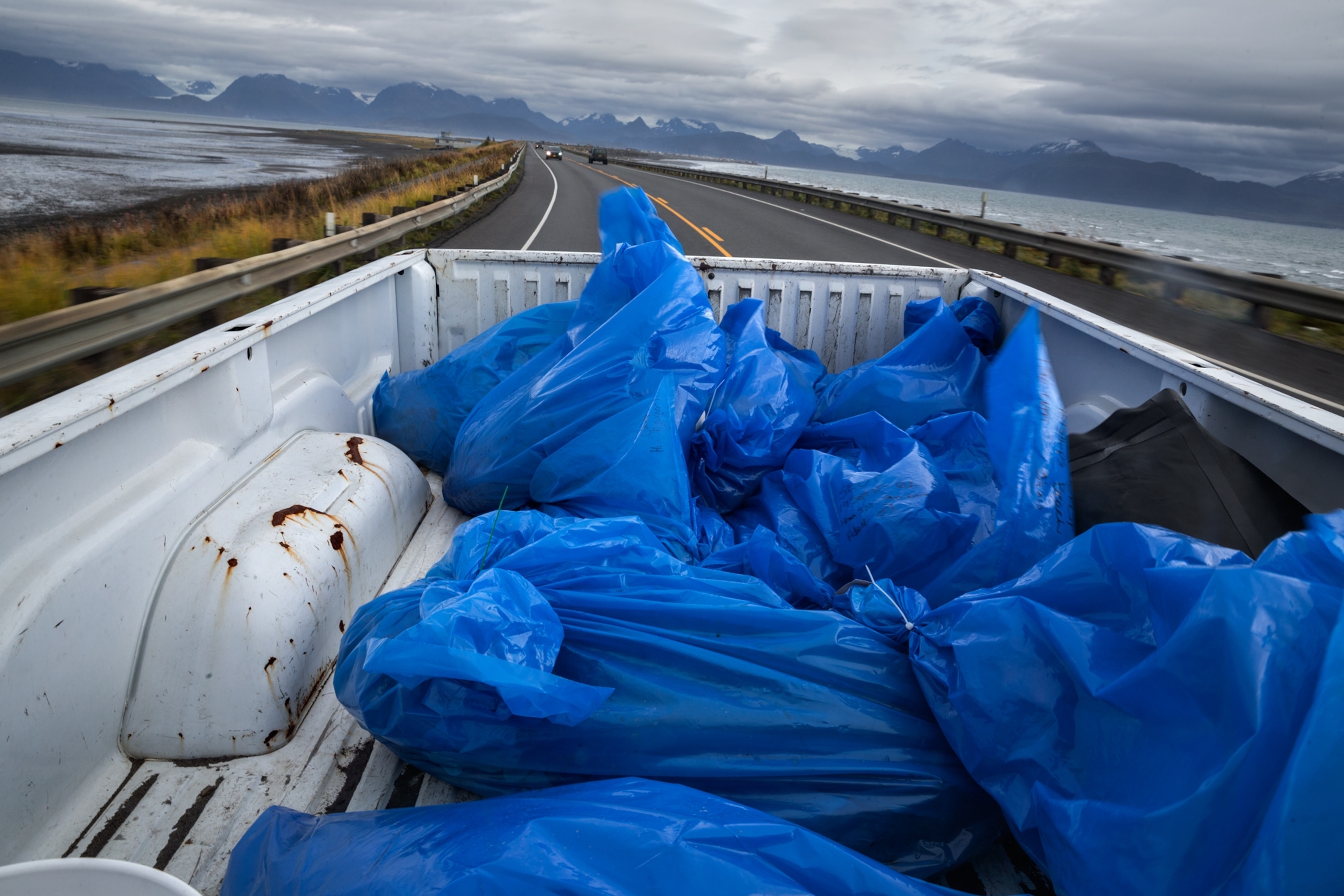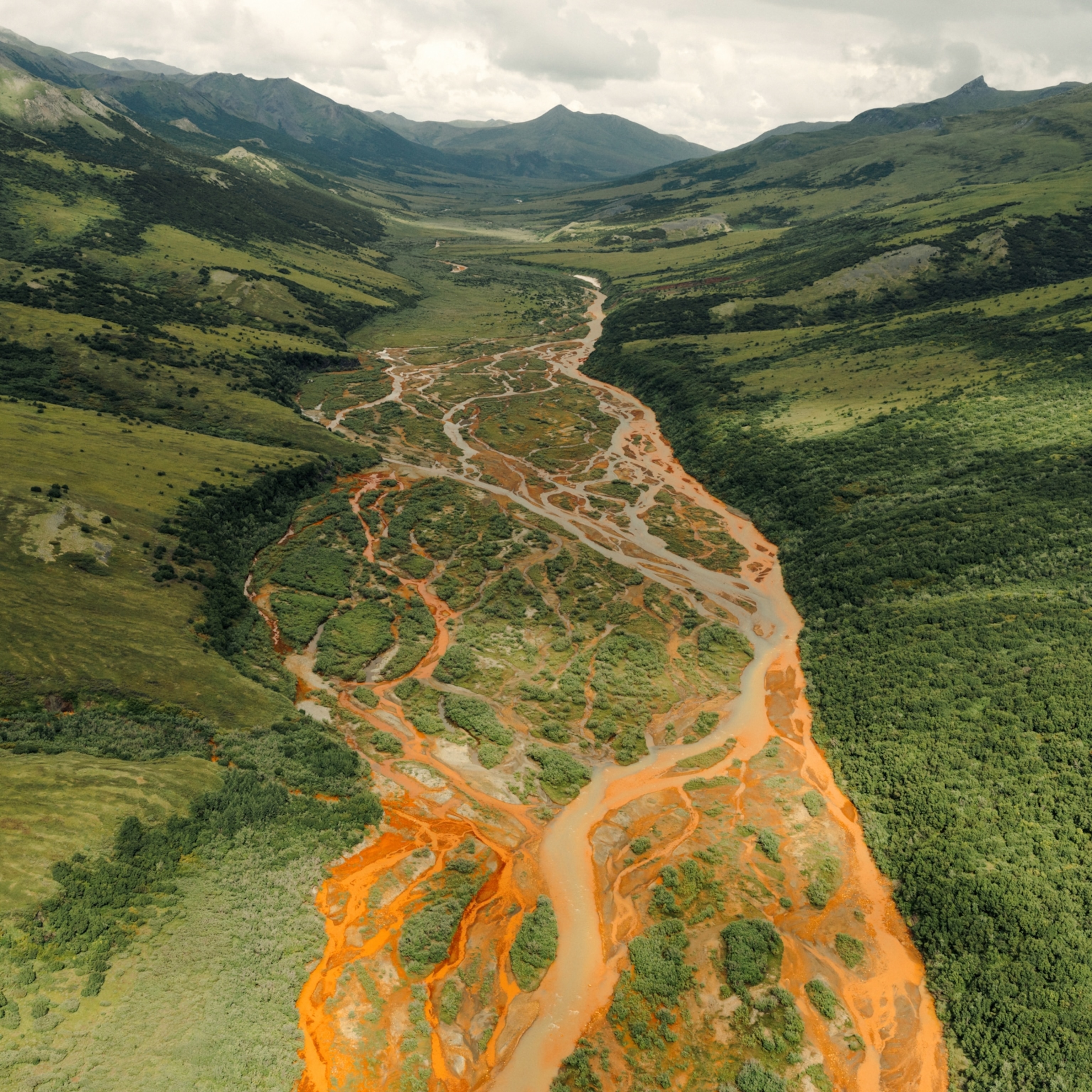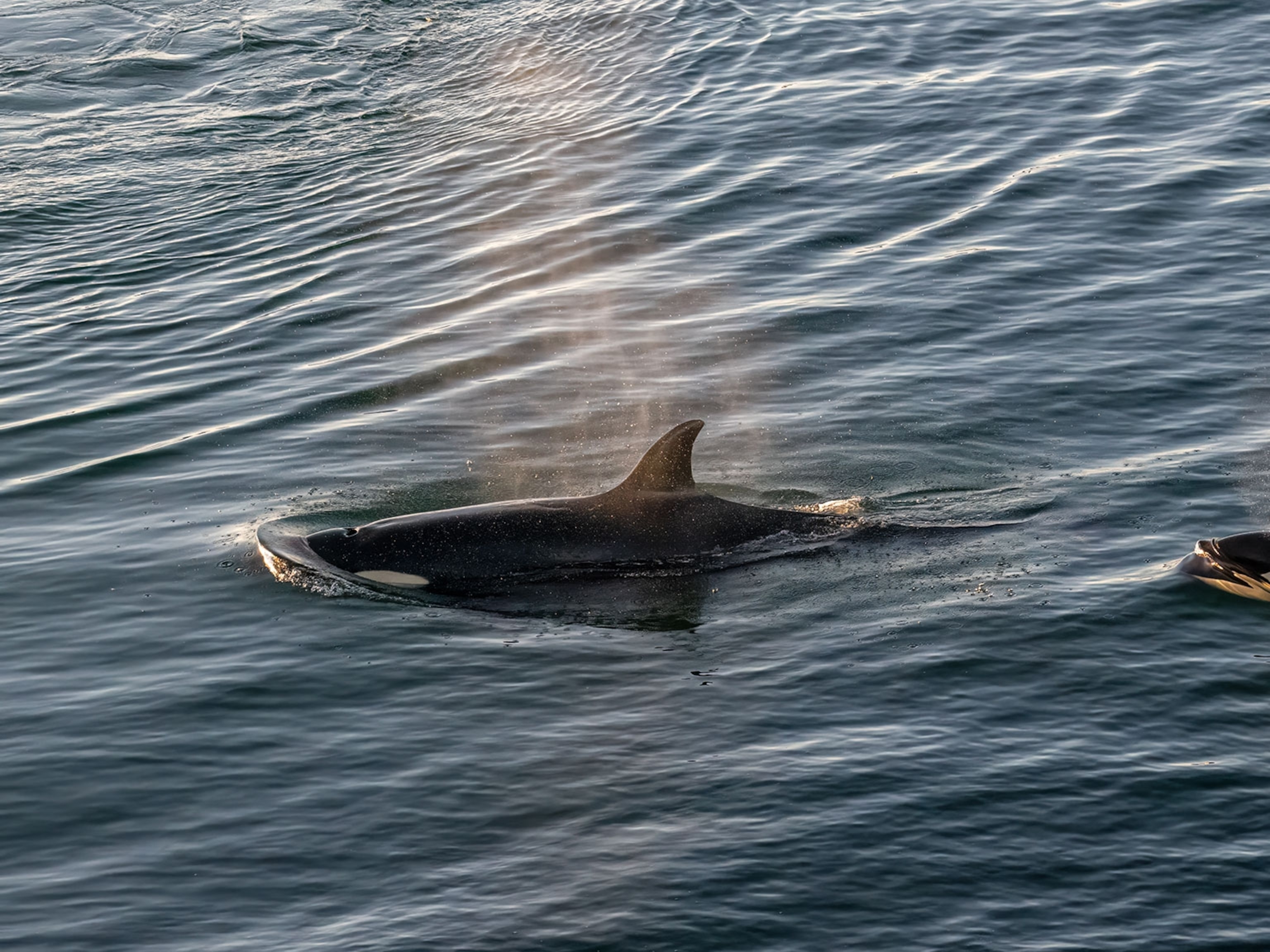The blob that cooked the Pacific
When a deadly patch of warm water shocked the West Coast, some feared it was a preview of our future oceans.
On January 10, 2019, a group of scientists reported in the journal Science that the world’s oceans nearly doubled the amount of heat they absorbed from the atmosphere—about 93 percent of all extra heat from climate change, and faster than previously thought. So far, because the oceans are vast, the baseline temperature of the water has shifted upward by only a fraction of a degree, but even that seemingly slight change has affected weather patterns, marine life, and sea levels around the world. And these new estimates line up with climate models, adding heft to their predictions, which show ocean warming accelerating even faster in the future.
On October 19, 2018, Nick Bond, a University of Washington atmospheric scientist, said that sea surface temperatures across thousands of miles of the North Pacific and Gulf of Alaska are now up to 3 degrees Celsius warmer than normal, "which is quite a bit." A ridge of high pressure is keeping skies warm and dry, allowing heat to build up. Storms predicted for next week could cool these seas. If not, though, the region could see a return of "The Blob," which from 2013 to 2016 thoroughly upended the marine world. See our September 2016 story for more on what happened then, and what's at stake now.
The first fin whale appeared in Marmot Bay, where the sea curls a crooked finger around Alaska’s Kodiak Island. A biologist spied the calf drifting on its side, as if at play. Seawater flushed in and out of its open jaws. Spray washed over its slack pink tongue. Death, even the gruesome kind, is usually too familiar to spark alarm in the wild north. But late the next morning, the start of Memorial Day weekend, passengers aboard the ferry Kennicott spotted another whale bobbing nearby. Her blubber was thick. She looked healthy. But she was dead too.
Kathi Lefebvre is talking about the whales as we crunch across a windy, rocky beach, 200 miles north of Kodiak. In a typical year eight whales are found dead in the western Gulf of Alaska. But in 2015 at least a dozen popped up in June alone, their bodies so buoyant that gulls used them as fishing platforms. All summer the Pacific Ocean heaved rotting remains into rocky coves along the more than 1,000-mile stretch from Anchorage to the Aleutian Islands. Whole families of brown bears feasted on their carcasses.
Lefebvre, a research scientist at NOAA’s Northwest Fisheries Science Center in Seattle, Washington, had examined eye fluid from one of the carcasses in a failed attempt to winnow the cause of death. Now the two of us are on Kachemak Bay in Homer, Alaska, inching toward a wheezing, dying sea otter sprawled out on the shore. Otter deaths are skyrocketing on the shoreline beneath the snowcapped Kenai Mountains, so Lefebvre is here to see whether the fates of these otters and whales are somehow intertwined.

In the past few years death had become a bigger part of life in the ocean off North America’s West Coast. Millions of sea stars melted away in tide pools from Santa Barbara, California, to Sitka, Alaska, their bodies dissolving, their arms breaking free and wandering off. Hundreds of thousands of ocean-feeding seabirds tumbled dead onto beaches. Twenty times more sea lions than average starved in California. I watched scientists lift sea otter carcasses onto orange sleds as they perished in Homer—79 turned up dead there in one month. By year’s end, whale deaths in the western Gulf of Alaska would hit a staggering 45. Mass fatalities can be as elemental in nature as wildfire in a lodgepole pine forest, whipping through quickly, killing off the weak and clearing the way for rebirth. But these mysterious casualties all shared one thing: They overlapped with a period when West Coast ocean waters were blowing past modern temperature records.
As hotter oceans destroy coral reefs in the tropics and melting ice alters life in the Arctic, it’s been easy to overlook how much warm water can reshape temperate seas. No more. Between 2013 and earlier this year, some West Coast waters grew so astonishingly hot that the marine world experienced unprecedented upheaval. Animals showed up in places they’d never been. A toxic bloom of algae, the biggest of its kind on record, shut down California’s crab industry for months. Key portions of the food web crashed. It’s not clear if greenhouse gas emissions exacerbated this ocean heat wave or if the event simply represented an outer edge of natural weather and climate patterns. But the phenomenon left daunting questions: Was this a quirk, an unlikely confluence of extremes that conspired to make life harsh for some sea creatures? Or was it, as one scientist says, a “dress rehearsal”—a preview, perhaps, of what hotter seas may one day bring as climate change unleashes its fever in the Pacific?
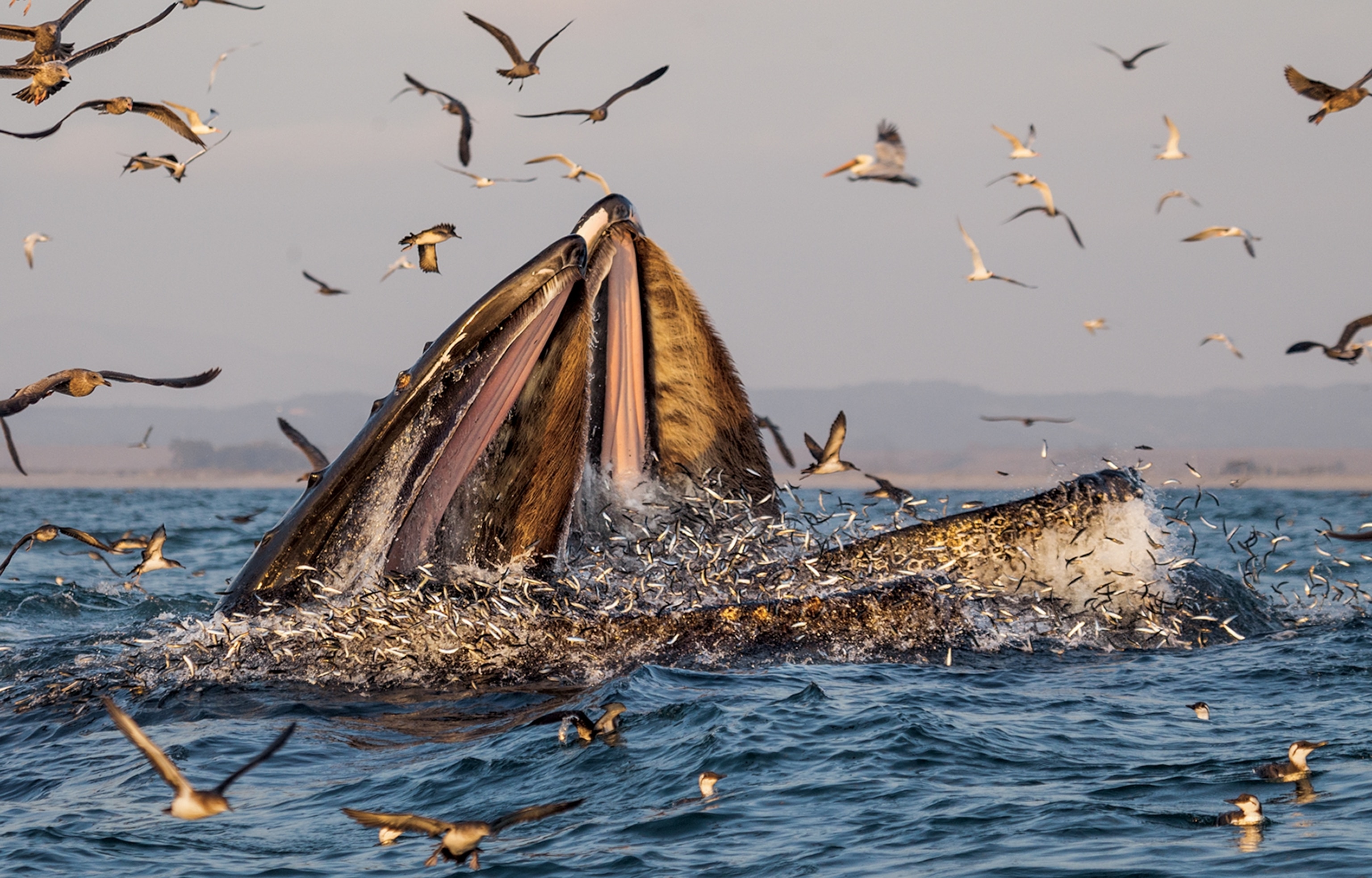
While Lefebvre and I are pondering our next move, a radio call comes in. Another dead otter has surfaced on Homer Spit, five miles away. We retrace our steps to a dusty parking lot, pile into a pickup, and head off.
Beginning in late 2013, a bewildering patch of warm water formed in the Gulf of Alaska. A stubborn atmospheric high-pressure system, nicknamed the “Ridiculously Resilient Ridge,” was keeping storms at bay. Just as blowing across hot coffee frees heat, winds usually churn and cool the sea’s surface. Instead, heat within this shifting mass, which University of Washington climatologist Nick Bond dubbed “the blob,” built up and morphed into a wider patch along North America’s West Coast, where it met warm-water masses creeping north. Sea temperatures in some places rose seven degrees Fahrenheit higher than average. Some patches of ocean were hotter than ever recorded. At its peak the warm water covered about 3.5 million square miles from Mexico to Alaska, an area larger than the contiguous United States.
Did planet-warming carbon dioxide from fossil fuels contribute to this event? No one knows for sure. One controversial notion suggests that the rapid retreat of Arctic sea ice is making the polar jet stream wavier, allowing weather systems to persist longer. A more accepted theory pegs this heat to normal atmospheric fluctuations in the jet stream triggered by warmth in the tropics. But even researchers subscribing to that theory don’t necessarily rule out a secondary role for climate change. “Is long-term warming somehow the puppeteer controlling things in the background?” asks Nate Mantua, at NOAA’s Southwest Fisheries Science Center in Santa Cruz, California. “I haven’t seen proof, but it’s clearly a prime suspect.”
Alaska's Sick and Dying Otters
Unscrambling this weird behavior is difficult because the world’s largest ocean is so confounding to begin with. Overlapping patterns that can last for decades already drive temperature swings. Every few years or decades the eastern Pacific flips from a food-rich, cold-water place to something warmer, a cycle called the Pacific Decadal Oscillation. El Niño, the periodic tropical warming, boosts temperatures in North America. An ocean freeway, the California Current, ushers cool water south from Canada to Baja California. Along the way, winds push warm surface waters offshore, causing upwelling, which draws much cooler, nutrient-rich seas from below.
All these volatile shifts can redistribute marine life. It just doesn’t usually wind up like this. “When all is said and done, I think people will see this as the most economically and ecologically consequential event in our historical record,” Mantua says of the recent warming.
Seeking to understand the magnitude of this episode, I am miles off the Oregon coast, weeks before visiting Alaska. The Elakha, a 54-foot research boat, is cutting through rolling chop beneath a milky sky. Bill Peterson, in jeans and a weathered craft-beer T-shirt, kneels on deck, face pressed into a red cooler. It holds the contents of a net his colleagues just hauled up from the sloshing depths. The NOAA oceanographer is here to show me how thoroughly the eastern Pacific has changed. “Oh my, that’s ugly,” he says. Over his shoulder, I glance down at the bottom of the ocean food web. I see only slop the color of motor oil. That’s his point.
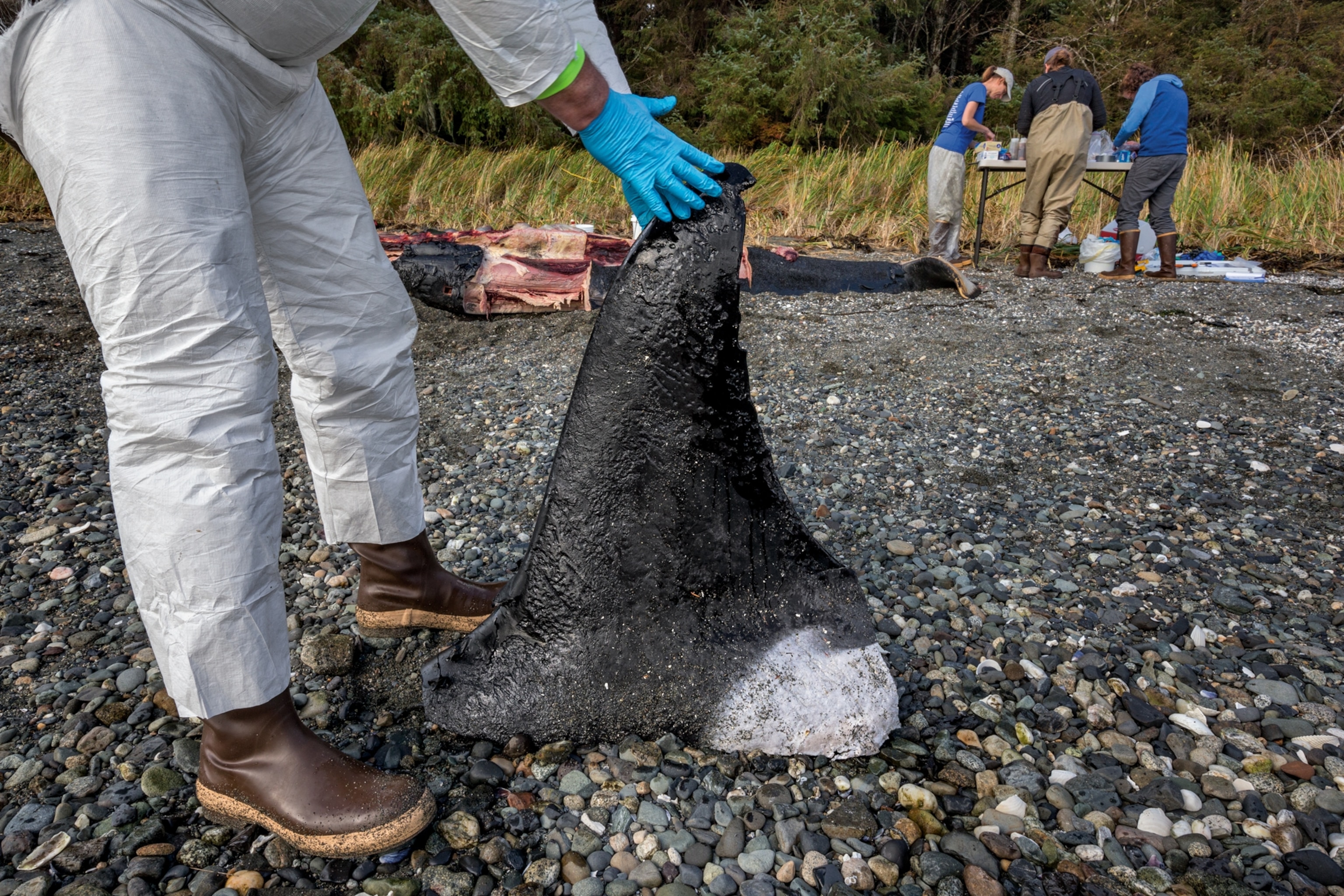
Every two weeks for 20 years, Peterson’s team has come here to gather the minuscule plants and animals that form the foundation of one of the planet’s most productive marine systems. The prize course in this buffet is supposed to be inch-long krill. Shaped like shrimps, they are gobbled by auklets, cohos, basking sharks, and whales. Anchovies and sardines eat them and then get wolfed by bigger fish and sea lions. At this time of year, krill should be abundant, but Peterson’s haul reveals mostly soupy algae and small jellyfish, which provide little sustenance. His team hasn’t seen krill in months. “It’s been like this nonstop,” he says.
Higher ocean temperatures have thrown this system out of whack. Not long after the warmth arrived, shelled octopuses more common in the South Pacific appeared off Southern California. Tropical sunfish and blue sharks were caught in the North Pacific. Market squid, common off California, laid eggs in southeast Alaska. A few venomous yellow-bellied sea snakes from Central America slithered across beaches near Los Angeles. Peterson’s team caught tropical or subtropical zooplankton he’d never seen: rainbow-hued, beetle-shaped copepods; minuscule iridescent creatures from Hawaii; tiny crustaceans with cobalt egg sacs. He cataloged nearly 20 new species that belonged far away.


Compared with krill, these zooplankton were limp-lettuce side salads: smaller and less nutritious. As this low-cal diet coursed through the food web, larval walleye pollock, common in the Gulf of Alaska, reached their lowest numbers in three decades. Halibut caught in Cook Inlet had mushy flesh—a syndrome associated with poor nutrition. Coho salmon returned to West Coast streams as malnourished runts. These changes coincided with other shifts. Sardines, already in decline, decreased so much that an industry made famous by John Steinbeck’s novel Cannery Row shut down for the first time since rebounding from its collapse in the 1950s. Sardine and anchovy populations are cyclical; their precipitous drop likely had little to do with warm water. But the impact was more pronounced because the unusual heat redistributed the remaining fish. Anchovies, already dwindling, seemed to vanish almost everywhere except Monterey Bay, where they gathered in great numbers, creating a weird feeding frenzy. At one point, 50 or more whales dined in the bay at once. In the Pacific Northwest humpbacks cruised into the Columbia River in search of food. Birds suffered too. At least a hundred thousand blue-footed Cassin’s auklets, small gray-feathered island nesters that eat krill, starved to death. It was one of the biggest die-offs of birds in U.S. history. Then, months later, hundreds of thousands of common murres died too.
Perhaps most visible were the skinny, sick sea lion pups that surfed ashore in California, loose fur drooping over bones, looking like children wrapped in parents’ clothes. They collapsed under porches and parked trucks. One curled into a chair on a hotel patio. Another slipped into a booth at a seaside restaurant. Without sardines or anchovies, their mothers ate junk-food diets of squid, hake, and rockfish, and weaned pups early. More than 3,000 were stranded in five months.
Chugging back to his office in Newport, Oregon, Peterson is baffled. After a lifetime studying the sea, he finds this warm ocean unfamiliar and disorienting, “like looking out the window and seeing a macaw fly by.”

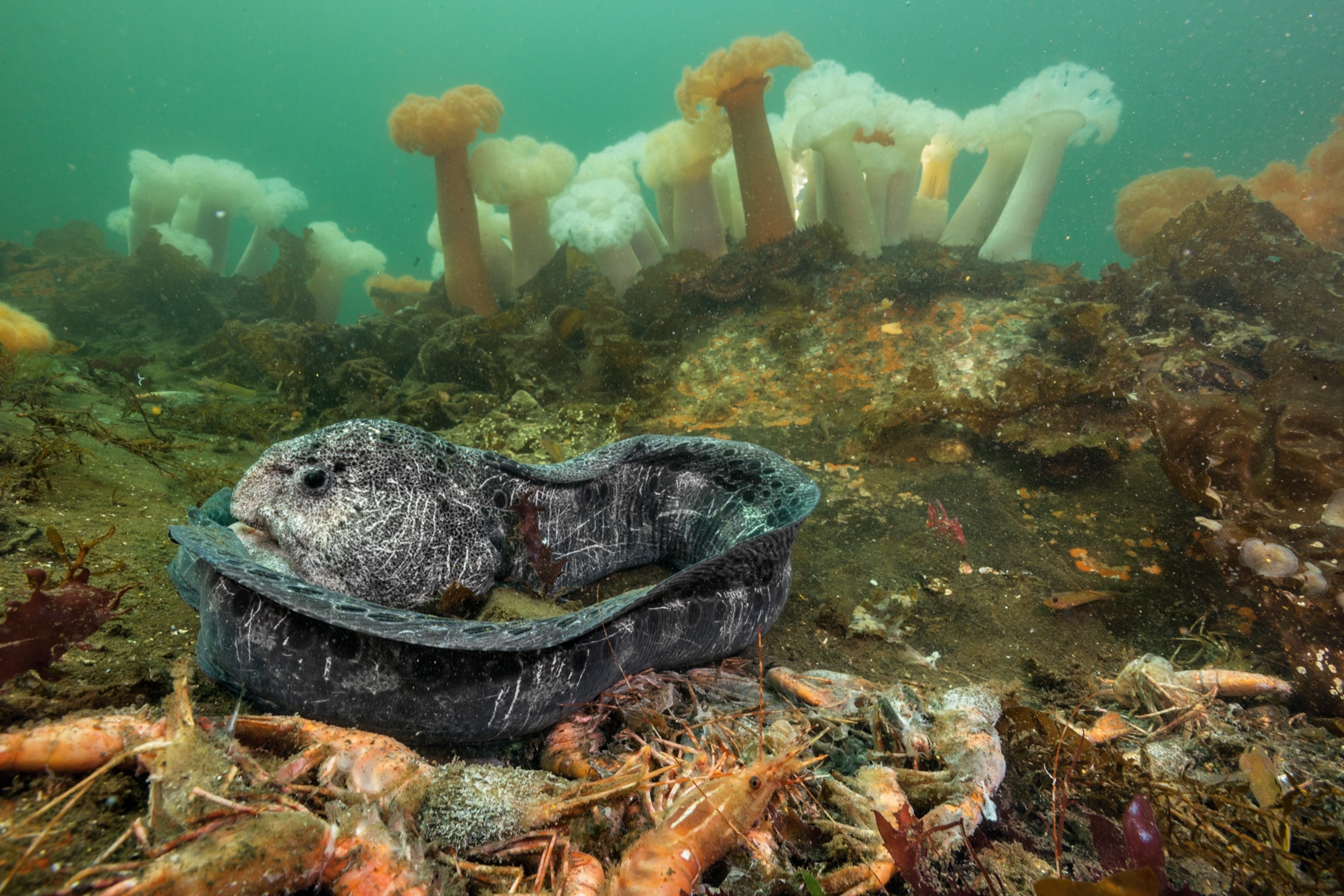
It's not that the blob is the new normal. It isn’t. Few if any of these changes are permanent. Even if they were, it wouldn’t mean the sea was dying. Ocean life will continue. But the blob offers something of an analogue for future seas under climate change. And marine life in this sea of tomorrow will look very different.
Warmer temperatures speed fish metabolisms, requiring them to eat more, just as their food declines. Some fish may see tinier bodies, more disease, and, in many cases, falling populations, according to recent studies. Already, according to the Intergovernmental Panel on Climate Change, many fish and plankton are heading toward the poles in search of cooler temperatures. As productive areas grow scarcer with less cold water, fish and predators will congregate in fewer places, creating new challenges. During the recent heat wave, more West Coast whales appeared to get tangled in fishing gear or debris. From 2000 to 2012, rescue crews fielded about 10 reports a year. Forty-eight were confirmed in 2015.
And when creatures show up somewhere new, our relationship with the sea can shift too. In Pacifica, California, I visit Richard Shafer, a lanky 58-year-old electrician who free-dives for fish with a speargun. As the heat wave drove game fish north from Mexico, fishing charters off Los Angeles had their best season in memory. So in August 2015, Shafer took a charter to an offshore bank west of San Diego. He speared a yellowtail, and then a hungry sea lion darted past. Knowing that sea lions steal big fish, especially in the absence of sardines, Shafer pulled his yellowtail close and swam toward the boat, only to be bitten on the wrist by a seven-foot smooth hammerhead. These sharks are rarely seen in California, and rarely attack, yet there were several encounters in 2015 during what one scientist called “an endless parade of hammerheads” lured by warm water. The animal severed Shafer’s tendon and fractured a pinkie and knuckle, requiring 40 stitches. Each change in the sea can trigger another that no one sees coming.
The sky pinks with the dying day as Kathi Lefebvre hops from a pickup truck onto a pebbly stretch of Homer Spit and stares down at the dead otter. Sea wash muddies the pale fur of its face. Otters in previous years mostly died from complications of a streptococcal infection. This year some of the dead look emaciated, while others look almost fit. Interns with the Alaska Maritime National Wildlife Refuge don blue latex gloves and begin an examination. One intern is moved nearly to tears. Another tells Lefebvre about an otter she’d seen shuddering in spasms the week before. Lefebvre perks up.
“The thing you’re describing, the tremors in the whole body?” Lefebvre says. “I’ve seen that. In sea lions.”
In 1998, as a Ph.D. student at the University of California, Santa Cruz, Lefebvre learned that dozens of sea lions were turning up sick and twitchy. Lefebvre had a hunch why: Each spring, a single-celled toxic alga called Pseudo-nitzschia blooms in small patches, usually for a week, maybe two, producing a neurotoxin called domoic acid, which accumulates in shellfish. When ingested by people, this toxin can cause seizures, memory loss, even death. It also can harm wildlife. In 1961, a Santa Cruz newspaper told of a mysterious invasion of sooty shearwaters “fresh from a feast of anchovies.” The seabirds bashed into windows and died on streets. Alfred Hitchcock used the incident as part of his inspiration for The Birds. Scientists tracking the mystery decades later unearthed old samples of plankton pulled from Monterey Bay in 1961. They detected high levels of Pseudo-nitzschia.
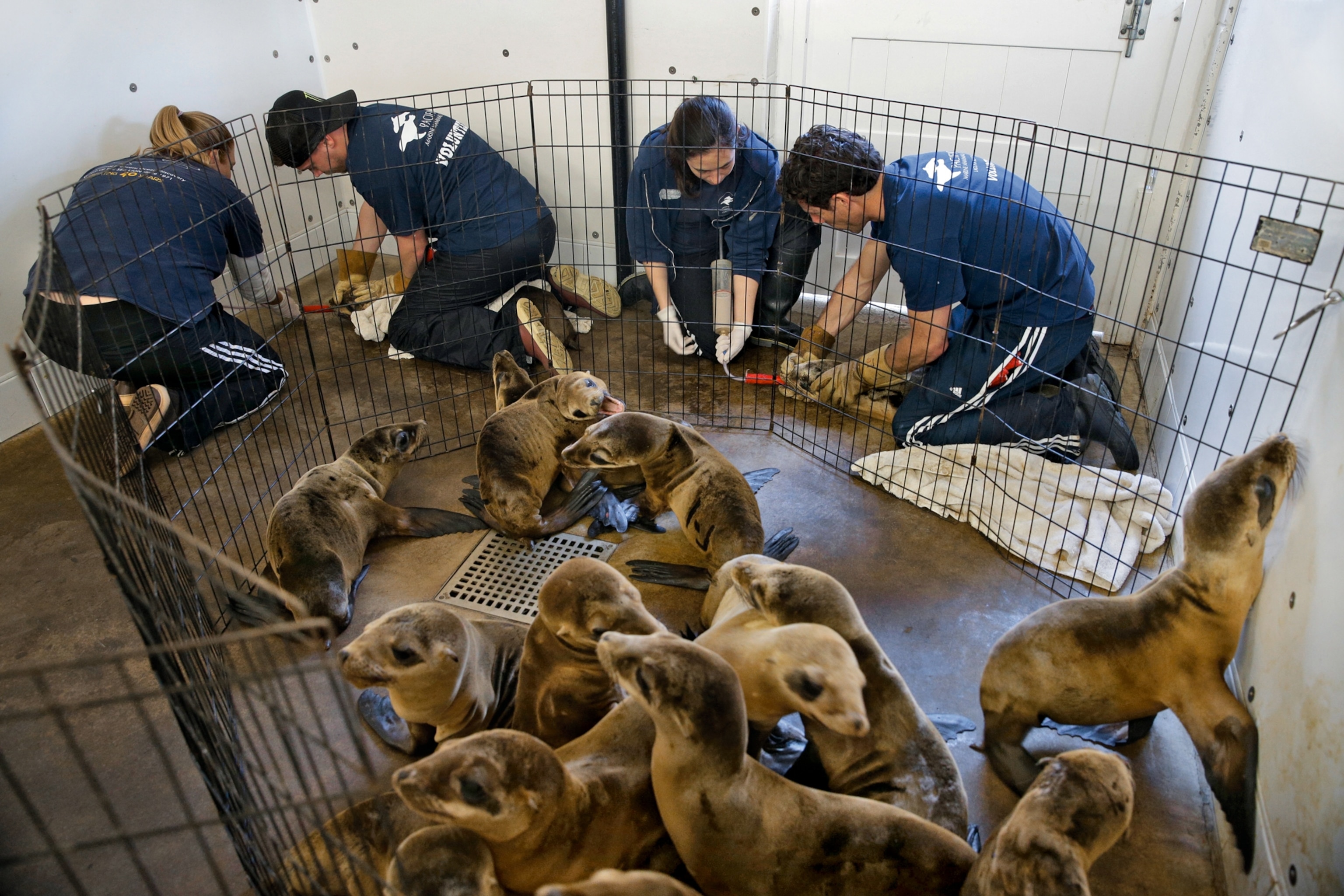
When Lefebvre found domoic acid in the feces of sick sea lions in 1998, it was the first evidence that this type of toxic bloom could hurt marine mammals. And blooms that year were particularly bad. El Niño had brought withering ocean heat to California, igniting the most ferocious bloom on record—until last year.
In April 2015 algae bloomed, but instead of dissipating after a few weeks, the bloom grew into a monster, morphing and shifting, stretching over 2,000 miles, from California’s Channel Islands to Kodiak. No one had seen anything like it. Some shellfish harvests closed along the coast. Toxin concentrations were 30 times greater than what would normally be considered high. Tests found domoic acid in some fish, such as anchovies, at amounts too dangerous for people to eat, a rarity. The toxin appeared to sicken hundreds of sea lions, seabirds, porpoises, and seals. Video from Washington State showed a sea lion suffering a toxin-induced seizure, something never seen that far north. Blooms dragged into November.
Then there were Alaska’s dead whales, primarily fins and humpbacks. Most were too remote or too far gone to test. A few that washed up in British Columbia showed traces of domoic acid, but the toxin flushes so quickly it’s impossible to know if the dose was large or small. Scientists lacked proof, but most shared a theory: Whales ate krill, copepods, or fish dosed by algal toxins, which killed them outright or scrambled their brains, hampering navigation and feeding. “Given that we’ve ruled out most other scenarios, what is most prominent in my mind is toxic algae,” says Andrew Trites, director of the Marine Mammal Research Unit at the University of British Columbia.
Standing on Homer Spit, Lefebvre wonders aloud if algae played a role in killing Alaska’s otters. She sets down plastic bags to collect specimens and pulls on gloves. Leaning over the stiffening otter, she bends to her work.
True to its B-movie name, the blob began fading in December 2015, its heat sinking deep into the sea with the arrival of a powerful El Niño. But divining what this heat portends will take years. New research suggests that heat waves like the blob may become more common and intense because of climate change. Scientists foresee “higher extremes, more unusual events. It gets more chaotic,” says Raphael Kudela, an ocean sciences professor at the University of California, Santa Cruz. Scientists project that toxic blooms will be more frequent, more widespread, and more toxic.
That could spell trouble for people too. I meet Dick Ogg in his paint-splattered khakis, strolling down a wooden ramp at Bodega Bay’s Spud Point Marina. He’s rebuilding a hold on the Karen Jeanne. The commercial fisherman chases salmon, albacore, and sablefish but makes his real money gathering Dungeness crab. Yet his boat hasn’t moved much in months. Crab remained unsafe to eat long after toxic blooms vanished, so California delayed its crab harvest for months, at a loss of $48 million. The governor sought disaster relief from the U.S. government. Out-of-work deckhands lived off gift cards and a marina food bank. The closest Ogg came to fishing was helping regulators catch crab to test for toxins. “A lot of folks are really hurting,” Ogg says glumly.
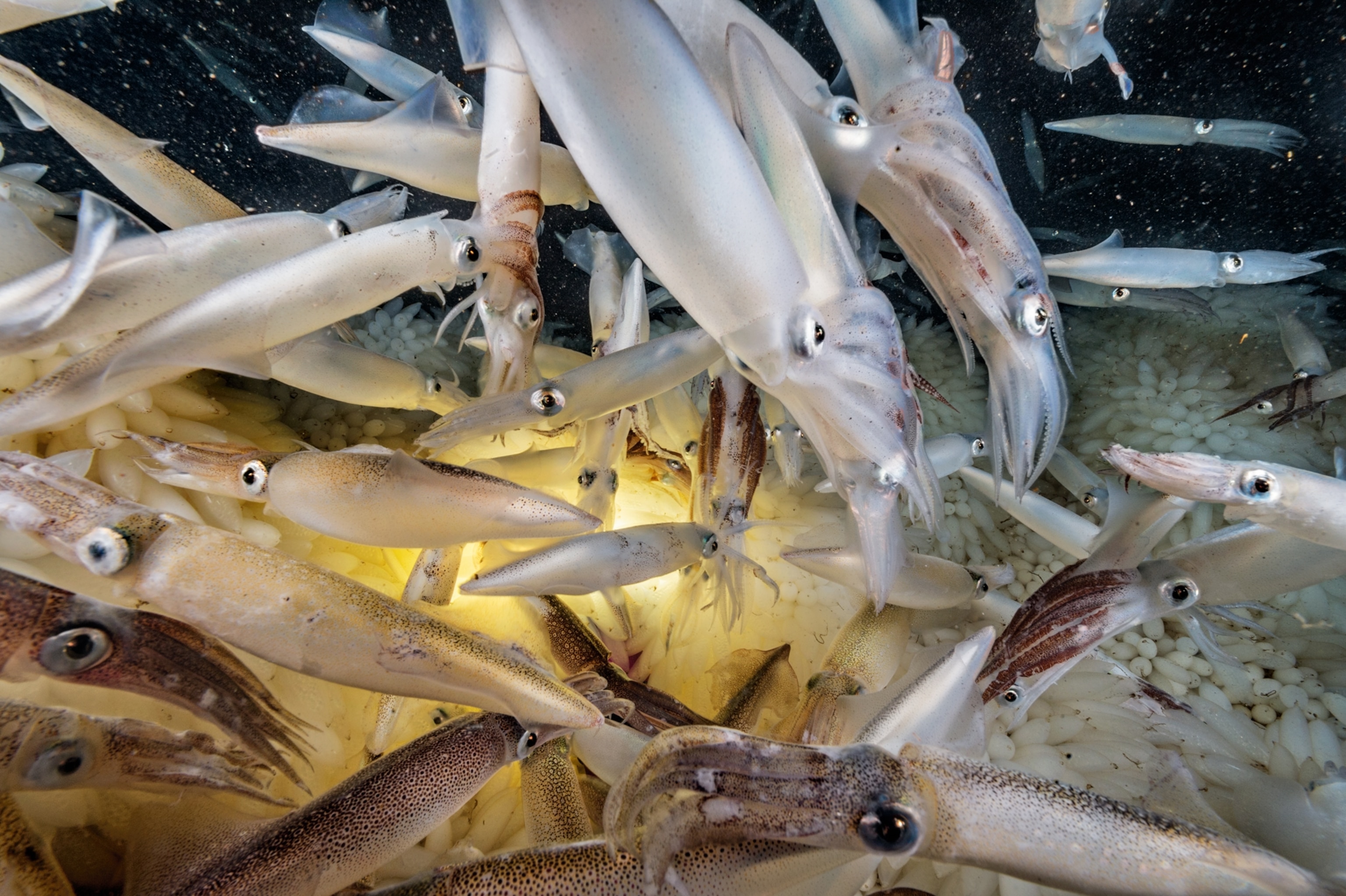
Yet not all of what the blob produced is a harbinger of something. Given warming over decades, rather than the blob’s span of roughly two years, plants and animals may adapt or move. Some die-offs might have happened without the blob. Sea star deaths, while hastened by the warm water, were actually caused by a virus that hit well before the blob. California sea lion populations may simply have grown too large.
And more changes are coming. Rising seas are reshaping coastlines. Natural low-oxygen zones in deep waters are expanding. Ocean acidification is making life harder for shellfish. Predicting the future is messy—especially when we barely understand the present.
Lefebvre never solved the otter mystery. By year’s end, 304 were dead—nearly five times the recent average. One-third of the carcasses that scientists tested were positive for toxic algae. But strep infection was diagnosed as the primary cause of death for most otters. Any role that the blob played in exacerbating the infection remains a riddle. Did algal toxins weaken the animals? Did warm water somehow make things worse? “We still don’t know how all these tweaks in our world come together,” Lefebvre says.
Weeks later, I have a similar chat with Julia Parrish, a bird expert at the University of Washington, who has been tracking the murres’ deaths. She doesn’t know if the seabirds chased scarce food to strange places, got mixed up by domoic acid, or were pushed ashore by winds. “I am still just mystified,” she tells me.
And that, more than anything, I now realize, may be our new normal: the unfathomable gulf between the sea we thought we knew and the one we’re rapidly creating.
This story was first published online on August 9, 2016 and last updated on January 11, 2019.
